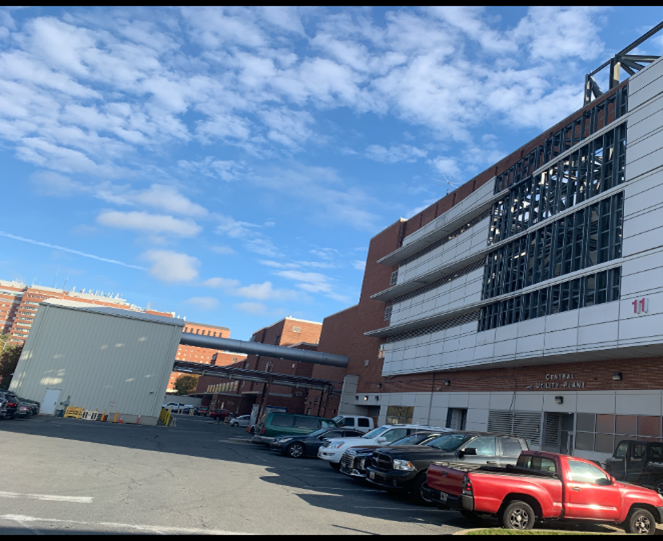The NIH has emission sources of air emissions and activities with significant environmental impacts from both stationary and transportation sources. However, these emission sources are controlled.
Stationary sources:
- These include: Boilers, Emergency Generators, Industrial equipment, Lighting, Heating, Cooling, Ethylene Oxide Sterilizers, Gasoline Underground Storage Tanks (USTs), Above Storage Tanks (ASTs), HITEC Generators, 23 MW Cogeneration System, Small Boilers, Medical Pathological Waste Incinerators, Greenhouse Gases.
The purpose of this program is to quantify emissions by source, develop plans as needed, and implement best available technologies and management practices to reduce emissions. Lighting, heating, cooling, and other activities generate air emissions that can cause atmospheric pollution. The Division of Environmental Protection (DEP) and the Office of Research Facilities (ORF) manage stationary sources as outlined by permits issued through the Maryland Department of Environment (MDE). DEP has identified sources of known, and potential, air emissions resulting from the operations of boilers, generators, equipment utilizing refrigerants and other industrial equipment that burn fossil fuels on campus. Nitrogen oxides (NOx), ozone depleting substances, and ethylene oxide present significant health hazards and environmental adverse effects. DEP alongside ORF install new technology, where feasible, to reduce NIH’s emissions footprint of these chemicals.
Transportation sources:
- These include: Cars, Trucks, Buses, and Government Vehicles.
NIH addresses these sources through a range of programs that seek to shift transportation practices to more energy-efficient, and less emissions-intensive, approaches.
The Division of Travel and Transportation Services offers NIH employees alternatives to commuting singly in individually-owned cars. Options include the Transhare Program, carpool/vanpool through the Ridefinders Network, bike racks and campus shuttles. These commuting options help ease traffic congestion, decrease pollution, and reduce stress.
The Central Utility Plant (CUP) located at Building 11 (Bethesda Campus)
 The CUP provides steam and electricity to the campus. It has one 23 MW Cogeneration System and five (5) Boilers, which supply the heating and a significant portion of the electricity on campus. There are two auxiliary boilers, which were temporary boilers until September 25, 2018. These boilers, which are in front of building 11, provide steam if the existing boilers and cogeneration system are out of service for maintenance. The boilers and cogeneration system operate on natural gas with ultra-low sulfur (No. 2 diesel) fuel as back up or secondary fuel. The CUP is also home to chillers, which provide air conditioning to the Bethesda campus.
The CUP provides steam and electricity to the campus. It has one 23 MW Cogeneration System and five (5) Boilers, which supply the heating and a significant portion of the electricity on campus. There are two auxiliary boilers, which were temporary boilers until September 25, 2018. These boilers, which are in front of building 11, provide steam if the existing boilers and cogeneration system are out of service for maintenance. The boilers and cogeneration system operate on natural gas with ultra-low sulfur (No. 2 diesel) fuel as back up or secondary fuel. The CUP is also home to chillers, which provide air conditioning to the Bethesda campus.
This facility operates five Continuous Emissions Monitoring Systems (CEMS) at the CUP to measure emissions from the exhaust stacks.
Construction Activities:
It is important to contact NIH DEP at (301) 496-7775 before commencement of construction activities. Below are some examples of activities requiring a permit or approval from MDE.
- Generator replacement, removal, or installation;
- Storage tank replacement, removal or installation;
- Sterilizer installation;
- Boiler replacement, removal, or installation;
- Replacement, removal, or installation of equipment that utilize refrigerants;
- Refrigerant recovery;
- Use or release of extremely hazardous substances;
DEP Points of Contact: Joseph Musa, musaj@mail.nih.gov; Trenise Trent, trenise.trent@nih.gov